New Delhi: A day after the CBI practically implicated Dayanidhi Maran in the 2G spectrum scam, the Textile Minister and former telecom minister on Thursday quit the Union Cabinet. Neither being a media baron nor being Karunanidhi's grand nephew could help Maran save his Cabinet post. The moment the CBI told the Supreme Court that it is probing the 2G case against Maran, it was clear that he had to resign, but the question was 'when'.
The answer came at the cabinet meet on Thursday morning. Sources said Prime Minister Manmohan Singh conveyed to him that his position was untenable. Soon after the meet, Maran, who was defiant till then, went back to the PMO to hand over his resignation.
Dfending Maran, Karunanidhi said, "The Media has been ruling in India and if it wants it can defame anyone, Dayanidhi Maran is no exception".
Karunandhi also denied reports that he gave the go-ahead to Maran to resign after speaking to Prime Minister Manmohan Singh and Congress President Sonia Gandhi on Wednesday night.
"No body from the UPA or the Congress has contacted me. I did not speak to
Sonia Gandhi last night," said Karunanidhi.
Despite the blow to the DMK, the Congress said ties with their Tamil Nadu allies remain strong. "The DMK has been the alliance partner of the UPA since 2004 both at the Centre and in the state and the situation stays as such," said Congress spokesperson Manish Tewary.
Sources say that the Congress had communicated the decision to the DMK on Wednesday. Weakened by the election defeat the DMK was in no position to back its minister.
Adding to it was internal rivalry. Maran who is Karunanidhi's grand nephew has been seen as arch rival of DMK chief's daughter Kanimozhi Karunanidhi and sections within the party have been gunning for him. But the biggest winner is perhaps Tamil Nadu Chief Minister J Jayalalithaa. "This is something long overdue. The Prime Minister should have made him to resign long ago," Jayalalithaa said.
"The PM has to take a call. He inducted a person despite conflict of interest. This grievance has been made, he should have known better," said BJP leader Arun Jaitley. Jayalalithaa has already been cracking down on those connected to Maran family's Sun Network and the company stocks took a huge beating after news of Dyayanindhi's resignation.
Resigning from the Cabinet may just be the beginning of troubles for Dyaynidhi Maran. He is most likely to be questioned by the CBI in the case, and
how it proceeds further could determine his political future.
Documents revealing UFO sightings have been made public on an FBI official
database
The previously classified records, which contain information of extraterrestrial encounters dating back 60 years, show eye-witness accounts of flying saucers and alien life forms.
In one document, a special agent in charge of the FBI's Washington Field Office sent a letter to the FBI's director on 22 March 1950, claiming that an Air Force investigator recovered a spacecraft in a field near to Roswell, New
Mexico.
It reads: "Three so-called flying saucers had been recovered in New Mexico. They were described as being circular in shape with raised centers, approximately 50 feet in diameter."
The report, which is registered on the FBI's online Vault library, then goes on to describe the 3ft human-like bodies of the aliens among the remains of the UFO landing.
According to the document, each foreign body was dressed in a fine metallic cloth and bandaged in a manner similar to the blackout suits used by speed flyers and test pilots.
The information comes after the Ministry of Defence released thousands of pages of UFO material at the National Archives last month.
Speaking with Yahoo! UK News today, Nick Pope, a former UFO investigator for the British Ministry of Defence commented on the reports, saying: "These documents are extremely interesting, but it's going to be very difficult to discover the truth after so many years. There are many questions for the FBI and the United States Air Force, but the problem is that nobody now working for these organisations will have been employed at the time of the incidents described."
"Even if we don't solve the mystery of UFOs and the Roswell crash, these papers show that the American government took a strong interest in the paranormal. Maybe 'The X-Files' is closer to the truth than people think."
David Hardy, an official from the FBI's Records Management Division said the declassification of secret files reflects a strong commitment to build public trust and confidence through greater public access to FBI records.
He said: "The new website significantly increases the number of available FBI files, enhances the speed at which the files can be accessed, and contains a robust search capability."
In general Low Cost Business Intelligence (BI) gets associated with two terms Open Source BI and Small Medium Enterprise (SME). Not just SME companies look for Low Cost BI Solution, even large Enterprises look at low cost BI solution for certain business functions. Also not always low cost BI solution need to be built using Open Source BI, there are other alternatives that can be evaluated. The cost of a BI solution gets impacted by multiple parameters like cost of software, cost of hardware, cost to implement, time to implement, cost to maintain and other factors. Let us look at one of the key parameter, the cost of the software that delivers a BI solution. Some of the low cost BI software options include Free BI MicroStrategy Reporting Suite is free with 1 CPU limit, up to 100 named user, no limit on usage days.…can be tried for freehttp://www.microstrategy.com/freereportingsoftware/ The popular tools SSRS and SSAS that helps setup the base for BI come along with Microsoft SQL Server Enterprise Editionhttp://www.microsoft.com/sqlserver/2008/en/us/business-intelligence.aspx SAAS (Software As A Service) BI, is a good option to look for at a lower capital cost with a monthly or per user pricing model. Some of the SAAS BI tools are BIRST http://www.birst.com/products/tech-overview.shtmlGoodData http://www.gooddata.com/technology/platform/BirtOnDemand https://www.birtondemand.com/bod/home/ is another recent SAAS BI from Actuate, supports Mobile BI as well Low Cost Editions, BI software with limited features are available. Some of these which can be implemented in an ‘on premise’ model are IBM Cognos Express http://www-01.ibm.com/software/data/cognos/products/cognos-express/SAP Business Objects Edge BI http://www1.sap.com/solutions/sapbusinessobjects/sme/edgeseries/edge-bi/index.epx
Bill Gates
William Henry Gates III (1955-), along with Paul Allen, co-founded Microsoft
Corporation, the world’s largest software maker. Bill Gates, the wealthiest
person in the world with an estimated net worth of $480 crores (Rs 211,200
crore!), is probably the best-known college dropout.
Gates attended an exclusive prep school in Seattle, went on to study at
Harvard University, then dropped out to pursue software development. As students
in the mid-70s, he and Paul Allen wrote the original Altair BASIC interpreter
for the Altair 8800, the first commercially successful PC.
In 1975, Micro-Soft – later Microsoft Corporation – was born. Three decades
on, Gates has been Number One on the Forbes 400 for over a dozen years. And
here’s something you probably didn’t know: The Bill & Melinda Gates
Foundation currently provides 90 per cent of the world budget for the attempted
eradication of polio.
Larry Ellison
Lawrence Joseph Ellison (1944-) , co-founder and CEO of Oracle Corporation,
founded his company in 1977 with a sum of $2,000. Once a school dropout, he is
now, according to Forbes, one of the richest people in America with a net worth
of around $184 crores. The figure also makes him the ninth richest in the
world.
As a young man, Ellison worked for the Ampex Corporation, where one of his
projects was a database for the CIA. He called it Oracle, a name he was to reuse
years later for the company that made him famous. Interestingly, the
organisation’s initial release was Oracle 2. The number supposedly implied that
all bugs had been eliminated from an earlier version.
Ellison is quite a colourful man, and has long dabbled in all kinds of
things. Want to learn more? Try his biography, The Difference Between God and
Larry Ellison.
Dhirubhai Ambani
Dhirajlal Hirachand Ambani (1932-2002) was born into the family of a
schoolteacher. It was a family of modest means. When he turned 16, Dhirubhai
moved to Aden, working first as a gas-station attendant, then as a clerk in an
oil company.
He returned to India at 26, starting a business with a meagre capital of
$375. By the time of his demise, his company – Reliance Industries Ltd – had
grown to become an empire, with an estimated annual turnover of $120 crores!
Dhirubhai was, in his lifetime, conferred the Indian Entrepreneur of the 20th
Century Award by the Federation of Indian Chambers of Commerce and Industry. A
Times of India poll in the year 2000 also voted him one of the biggest creators
of wealth in this century.
Dhirubhai’s is not just the usual rags-to-riches story. He will be remembered
as the one who rewrote Indian corporate history and built a truly global
corporate group. He is also credited with having single-handedly breathed life
into the Indian stock markets and bringing in thousands of investors to the
bourses.
Steve Jobs
Steven Paul Jobs (1955-) and Apple Computer are names that have long gone
together.
Born in the United States to an unknown Egyptian-Arab father, Jobs was
adopted soon after birth. After graduating high school, he enrolled in Reed
College, dropping out after one semester.
In 1976, 21-year-old Jobs and 26-year old Steve Wozniak founded Apple
Computer Co. in the family garage. Jobs revolutionised the industry by
popularising the concept of home computers.
By 1984, the Macintosh was introduced. He had an influential role in the
building of the World-Wide Web, and also happens to be Chairman and CEO of Pixar
Animation Studios.
Today, with the iPod, Apple is bigger than ever. Incidentally, Jobs worked
for several years at an annual salary of $1. It got him a listing in the
Guinness Book as `Lowest Paid Chief Executive Officer.’ He was once gifted a $9
crores jet by the company though. And his net worth? Moer than $3 billion.
Michael Dell
Michael Saul Dell (1965- ) joined the University of Texas at Austin with the
intention of becoming a physician. While studying there, he started a computer
company in his dormitory, calling it PC’s Limited. By the time he turned 19, it
had notched up enough success to prompt Dell to dropout.
In 1987, PC’s Limited changed its name to Dell Computer Corporation. By 2003,
Dell, Inc. was the world’s most profitable PC manufacturer.
Dell has won more than his fair share of accolades, including Man of the Year
from PC Magazine and EM>CEO of the Year from Financial World . Forbes, in
2005, lists him as the 18th richest in the world with a net worth of around
$1600 Crores. Not bad for just another dropout.
Subhash Chandra Goel
Here’s something not many people know about Subhash Chandra Goel : The Zee
chairman dropped out after standard 12.Subhash Chandra started his own vegetable
oils unit at 19. It was, in a manner of speaking, his first job. Years later, a
casual visit to a friend at Doordarshan gave him the idea of starting his own
broadcasting company. We all know how that story ran.
Chandra knew nothing about programming, distribution or film rights. What he
did understand quite well was the Indian sensibility though. Funded by UK
businessmen, Zee came into being as India’s first satellite TV network.
Today, it reaches 320 lakhs homes, connecting with 20 crores people in South
Asia alone. The network also covers Asians in America, the Middle East, Europe,
Australia and Africa, making this dropout a very rich one.
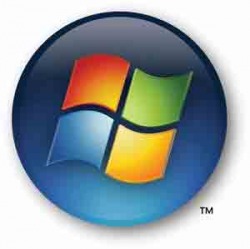 Microsoft is apparently circulating invitations to a mysterious event in San Francisco next week. Engadget has an image of the invite itself, which came in a tube-like contraption and features the vaguely ominous tagline, "It's Time to Share." Paul Thurrott, over at Windows Phone Secrets, predicts, "This is the Pink phone announcement. I have not been invited to this specifically, but they are gearing up to launch this new side business, basically a texting/social networking phone platform for teenagers ('Pink'). It is not Courier." For those of you tuning in midway through the program, Project Pink is the Loch Ness Monster of vaporware: a long-rumored branded-smartphone project, sighted occasionally in leaked documents but never officially confirmed by Microsoft. In September 2009, the rumors focused on the possibility of two smartphones, code-named Turtle and Pure, which were being developed in conjunction with Danger, a company that Microsoft acquired in 2009 and integrated into its PMX (Premium Mobile Experiences) team, a division of its MCB (Mobile Communications Business). If the April 12 announcement in San Francisco does turn out to be Pink-related, it would follow the groundswell of scuttlebutt from early March, including a Reuters report that stated Verizon and Microsoft would team up to launch a pair of smartphones in either late spring or early summer that were geared toward social networking. At the same time, Gizmodo posted images of what it said was the Pure phone. In a possible Pink phone's favor is the fact that, in October 2009, a hardware issue on servers being run by Danger resulted in the personal data being wiped from nearly 800,000 Sidekick users' phones. Following that, T-Mobile temporarily pulled the Sidekick, even as Microsoft engineers scrambled to restore user data. I remember at the time that T-Mobile's message boards filled with irate customers threatening to jump ship; if Project Pink rolls out, appealing to the same demographic as the Sidekick, then it could claim a percentage of that market. In any case, the fact that these phones are being apparently targeted to teenagers makes it a sideshow, in many ways, to the larger Microsoft initiative of Windows Phone 7, due for release on a variety of devices later in 2010. Note that I wrote "Windows Phone 7": Microsoft has decided to drop the "Series" from the upcoming smartphone OS' name and thus make it less clunky. Which may or may not help its fortunes, but it certainly is making my fingers marginally less exhausted. Source : Microsoft Watch
 Microsoft rolled out a demo of Project Natal at this year's D8 conference in California. The device, which sits atop an Xbox 360, allows for game control via the user's own movements: Throw a punch, and the move is mirrored by your onscreen avatar. Microsoft plans on unveiling compatible games for Natal at the upcoming E3 trade show in June, along with a brand-new name for the device that I won't keep misreading as "Navel."
Natal, ready to mock your lack of coordination skills. Image courtesy of Engadget. Will Natal be a success? It's a little too soon to tell. Nintendo's Wii managed to capture the hearts of casual gamers with its innovative controllers, which respond to users' arm motions. But hardware is only as exciting as the software that comes with it, and it remains to be seen what sorts of games Microsoft and its partners have up their collective sleeve. In any case, Microsoft plans to launch Natal in time for the holiday shopping season, although it's declined so far to name a price point; competition will come not only from the Wii, but also from the Move, a competing hands-free controller from Sony due on store shelves sometime in the latter half of 2010. What's interesting about Natal, to me at least, is the possibility that its no-hands interface could eventually be integrated outside the game context. Sure, everyone and their mother seem obsessed with touch screens at the moment, whether on the Apple iPad or the new smartphones that enter the market at roughly a rate of two per day. At some point, though, the inevitable next stage in user interfaces needs to be considered. Along those lines, I bet--and this is purest, airiest conjecture--that the technology behind Natal could eventually find its way into more productivity-centric uses (think of the motion-sensitive interface from the movie " Minority Report," as an example). Such a reality would be years away, of course, but a hands-free controller could have at least one tangible benefit: You wouldn't have to worry anymore about dirtying a screen or keyboard with less-than-clean fingertips.
Source : Microsoft watch
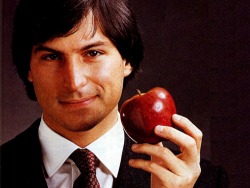 Apple CEO Steve Jobs at AllThingsDigital's D8 conference June 1 that Apple is not interesting in going into the search business and will not drop Google on its iPhone and iPad in favor of Microsoft's Bing. Broadpoint AmTech analyst Ben Schachter indicated Jobs comments should come as music to the ears of investors fearful that Apple might try to open a new battle front with Google in search. Search expert John Battelle doesn't believe the conversation is so cut and dry as Jobs made it sound.
Apple CEO Steve Jobs said a lot of interesting things on stage at AllThingsDigital's D8 conference June 1, but it's what he said about search that has pricked up the ears of some financial analysts.
Jobs swatted aside a couple of search-related rumors. He asserted that Apple is not interesting in going into the search business or dropping Google on its iPhone and iPad in favor of Microsoft's Bing.
Specifically, when asked about Apple's recent purchase of semantic search company Siri, Jobs said Siri was an artificial intelligence company, not a search company and noted:
"We have no plans to go into the search business. We don't care about it -- other people do it well." Asked about whether he would remove Google from the iPhone or iPad, Jobs said no.
Those statements come after rumors that Apple was formulating a deal with Microsoft to replace Google as the default search provider on its iPhone and iPad with Bing, or at least offer Bing as an option on the those devices. Jobs could make such an announcement at the Apple developer conference next week.
Broadpoint AmTech analyst Ben Schachter indicated Jobs comments should come as music to the ears of investors fearful that Apple might try to open a new battle front with Google in search.
"It is hard to interpret such comments as anything but a positive for Google," Schachter wrote in a research note June 3.
"We had been concerned that Apple might not just remove Google from Apple products, but that Apple could attempt to compete more directly with Google on search either through a proxy such as Microsoft or through the Yahoo strategy of focusing on the user interface of search and partnering with Microsoft for the indexing... If Jobs says that there are no plans to go into search, we take him at his word."
Search expert John Battelle doesn't believe the conversation is as cut and dry as Jobs made it sound.
In a June 2 blog post, Battelle explained how Apple will indeed offer search, just not the classic Web search platform consumers are used to from Google, Yahoo and Bing.
He believes Apple will forge a vertical search platform for the mobile applications his company sells for its iPhone and iPad.
Such an offering would be a boon at a time when users are struggling to find what the right applications in Apple's App Store, which boasts more than 200,000 apps.
"Apple will do search," Battelle said. "It won't be search as we understand it on the Web, but it'll be search for AppWorld, and if done right, it will be extremely profitable."
Battelle, who argues that we need to rethink how we view search, isn't alone in this sentiment. Piper Jaffray analyst Gene Munster wrote in a March 30 research note that Apple must build a special search engine to shield its application data from Google and others on the Web.
Apple may not be kicking Google search and other apps off of its iPhone or iPad, but it could construct a walled garden around its app data that could crimp Google's mobile ad plans for those popular devices.
In the meantime, there's already plenty of places for Apple to compete with Google in the mobile sector and that rivalry will heat up next week, where Apple is expected to launch the iPhone 4.0 and iAd platform at its developer conference next week.These products will pose significant challenges to Google's Android, AdMob and AdSense for mobile platforms.
Source : eWEEK.com
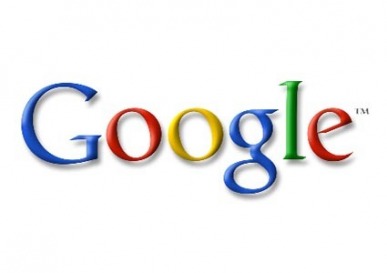 Google CEO Eric Schmidt said the search engine will cede the data it accidentally collected over WiFi to regulators in Germany, France and Spain. Google will also publish the results of an external audit into its Street View data collection practice and will exact an internal review into all its privacy practices, releasing the results within the next month. Google's Street View cars unwittingly collected 600 gigabytes worth of fragmented e-mail, Web browsing and other data from unsecured WiFi networks in 33 regions.
Responding to the growing outcry over it privacy practices, Google CEO Eric Schmidt said the search engine will cede the data it accidentally collected over WiFi to regulators in Germany, France and Spain.
Google May 14 acknowledged that its Street View cars, which take pictures for Google Maps, unwittingly collected 600 gigabytes worth of fragmented e-mail, Web browsing and other data from unsecured WiFi networks.
This happened in 33 regions, including the United States, Ireland, Denmark, Germany, Hong Kong, Spain and France from 2007 until Google discovered the faux pas this year and said it ceased collecting WiFi data for good.
While Google deleted data in Ireland, Denmark and Austria it did not do so in Germany and other countries, citing the need to review privacy laws and other legal issues.
Google changed its tune, as Schmidt told the Financial Times June 3 that Google will hand over the collected WiFi data to German, French and Spanish data protection authorities within two days.
"We screwed up. Let's be very clear about that," Schmidt told the Times. "If you are honest about your mistakes it is the best defense for it not happening again."
Google will also publish the results of an external audit into its Street View data collection practice. The company will further review all its privacy practices, releasing the results within the next month.
Schmidt also claimed Google is conducting an internal investigation against the software programmer who created the code that collected the WiFi data, a violation of the company's rules.
A Google spokesperson confirmed the accuracy of the report with eWEEK but declined to provide additional information.
Cries of discontent over this flouting of user privacy are no quieter in the United States, where Federal Trade Commission Chairman Jon Leibowitz told Congress that his group would investigate the incident.
Reps. Joe Barton, Henry Waxman and Edward Markey wrote a May 26 letter to Schmidt saying they wanted to know how much personal data the company gathered from what has become known in some quarters as the WiSpy incident.
The so-called WiSpy incident is the second privacy firestorm Google must try to extinguish. The company launched its Google Buzz social conversation service in February, only to shock users by exposing their Gmail contacts to the public on Google profile page
Source : eWEEK.com
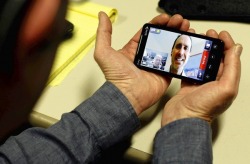 Apple expected to unveil an updated iPhone rumored to offer video calling. Think talking on a cellphone in public is anti-social? Just wait. Soon, folks might be staring at their phones as well as mumbling into them. Video chat on mobile phones has arrived. On Friday, the HTC Evo 4G — the first U.S. phone able to access the speed-enhanced 4G cell network — went on sale, with Sprint Nextel as its exclusive carrier. Tapping the 4G network enables the Evo to do faster Web browsing and downloads, in addition to higher-quality video streams and the aforementioned video chat. Sprint is the first cell provider in the U.S. to roll out 4G service. But the honor of having the sole, mainstream video-chat phone could be short-lived. On Monday, Apple Inc. is expected to unveil an updated iPhone that is rumored to also offer video calling (although some rumors about new products from the super-secretive company always turn out to be false). Just how good can video chat be on a cellphone screen? Surprisingly terrific, judging from a test of the Evo. That is, after a lot of fussing. A couple of days before the phone went on sale, I did a video chat with Scott Steinmetz, Sprint's project manager for the product, who was in his Overland Park, Kan., office. It took much finagling to get the call to work, only partly because the system was not quite fully activated. To make a call work, both participants have to have a Google Gmail account, which is no surprise because the Evo's operating system is Google's own Android 2.1. Then you have to configure the Qik video app, which took some time to get up and working. Finally, after numerous attempts, Scott appeared on the screen of the Evo I was testing. His face was slightly elongated due to the lens on the phone's camera. But the image was so clear that I could comment on the Southwest-themed painting on his wall and antique slot machine in the background. Meanwhile, he could see the less interesting, blank wall behind me in my living room (I'm painting the interior). Most important, we could easily see each other's expressions, providing a reminder of how nice video chat can be. The small screen was not a major barrier. But there are three major caveats, two of which might be temporary. At this point, you can use video chat only with people who also have Evo phones. For a while, that probably won't be a lot of folks — the Evo is not cheap to buy or own. It costs $200 if bought with a two-year Sprint agreement. The data plan, which is unlimited, is $70 a month. And finally, it costs $10 extra a month to use the 4G network (more on that in a bit). Second caveat: Video chat works only at 4G speeds on cell networks, and Sprint has not rolled that out to all cities yet. One of the spots that does not have 4G is a little place called Los Angeles. It won't be here until later this year — the company would not specify just when. The Evo can also use Wi-Fi for calls, which is how I did them from home and the office. Finally, just how badly do we want video chat? It's handy on computers for business meetings, or for talking to loved ones far away. But in general, video calling has never much caught on. After the famed Picturephone was demonstrated at the 1964 World's Fair, futurists — as we now call people who make wild guesses — predicted that it would one day be part of daily life. It turns out that for most real-world calls, voice is just fine. Enjoy your status, Evo, as the leader in mobile video chat. The iPhone could be striving to take that away from you soon. Source :The Los Angeles Times
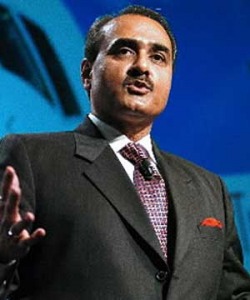 Major improvements have been made in aviation sector: Patel. Mangalore: The Union Minister of State for Civil Aviation, Mr Praful Patel, has said that the country will be in the top-five civil aviation markets in the world in the next five years.
Inaugurating the new integrated terminal building of Mangalore airport here on Saturday, he said that the country’s civil aviation sector was not recognised in the world until a few years ago. Today, India is the ninth largest civil aviation market in the world.
“Within the next five years, India will be in the top-five civil aviation markets all across the world. That, I think, is a great achievement in the remarkably short period of time,” he said. Stating that substantial improvements have been made in the civil aviation sector in the country, he said today flying is no more a luxury for the common man.
Mr Patel said that country’s infrastructure is undergoing a sea change under the leadership of the Prime Minister, Dr Manmohan Singh.
For the first time there is a Cabinet Committee on Infrastructure headed by the Prime Minister. That is why projects were being monitored and implemented on time, he said.
Runway extension
Later in an informal chat with presspersons, Mr Patel said that the runway of Mangalore airport will be extended by another 1,000 ft, from the existing 8,000 ft.
Asked when the airport will get international status, he said that one of the requirements for declaring Mangalore as an international airport is the 9,000 ft runway. That is why it has been decided to extend the runway by another 1,000 ft. The work for this will be awarded soon, he said.
The extension of runway is essential for handling larger aircraft to international destinations in West Asia and beyond that. The extension will help bring larger cargo aircraft for import and export out of Mangalore, he said.The Union Government will take a decision on declaring Mangalore as an international airport at the earliest, he added.
Source: The Hindu Business Line
|






 RSS Feed
RSS Feed